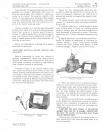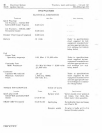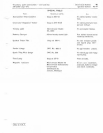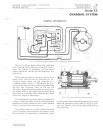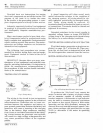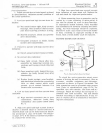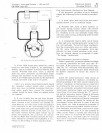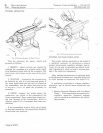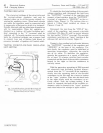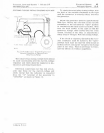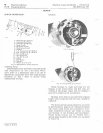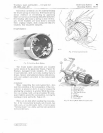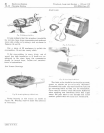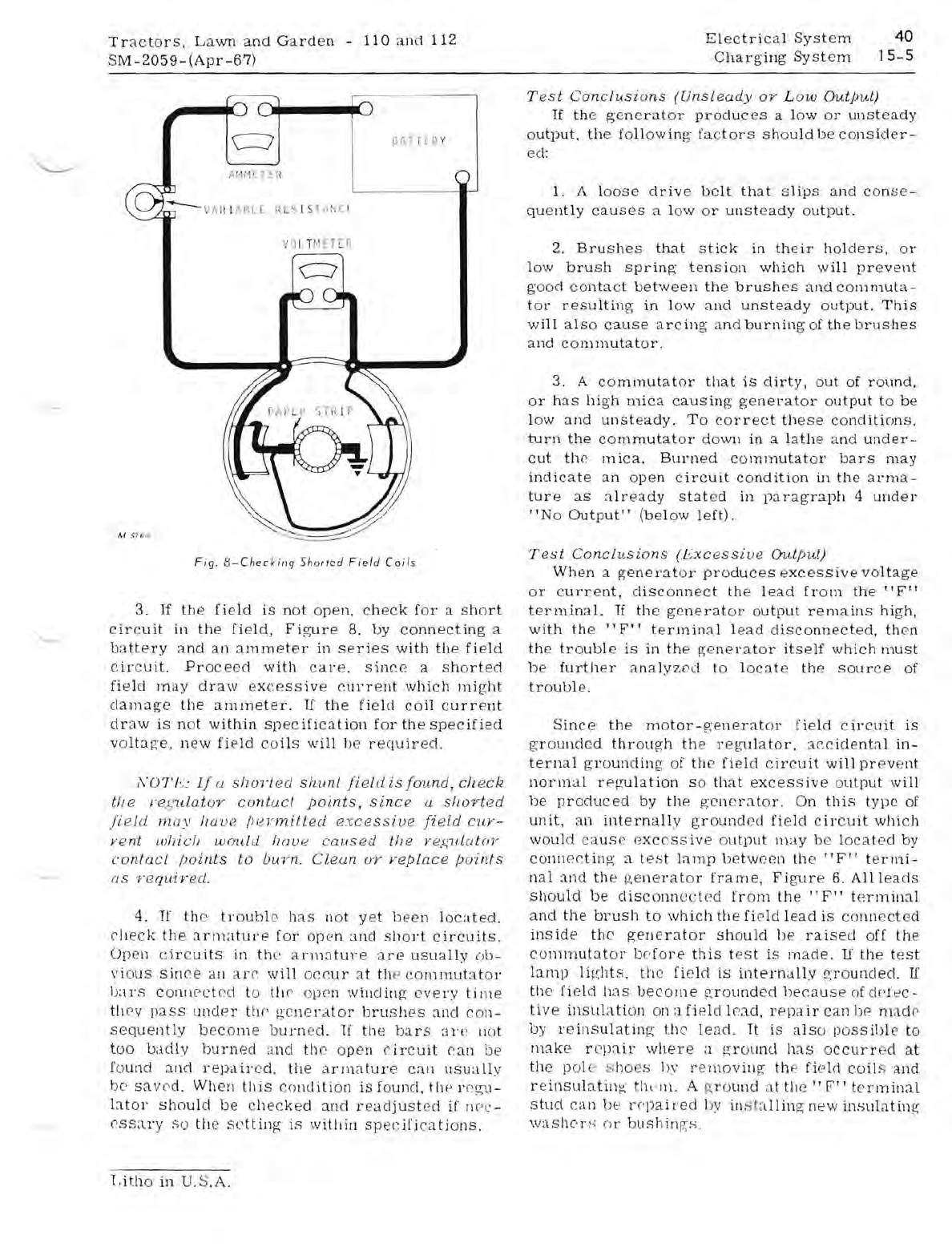
Tractors,
Lawn
and
Garden
-
110
and
112
Electrical
System
40
SM-2059-
(Apr-67)
Charging
System
15-5
UATHk
Y
A
I'H-lL
TE
R
In
,)
11\:', Cl
OL H IE
HI:
Fig.
8-Checking
Sho,fcd
Field
Coils
3.
If
the
field
is
not
open,
check
for
a
short
circuit
in
the
field,
Figure
8,
by
connecting
a
battery
and
an
ammeter
in
series
with
the
field
circuit.
Proceed
with
care,
since
a
shorted
field
may
draw
excessive
Clll'rent
which
might
damage
the
ammeter.
If
the
field
coil
current
draw
is
not
within
specification
for
the
specified
voltage,
new
fipld
co
ils
will
be
required.
NOTK
1/ a
shorted
shun!
field
is
found,
check
til
e
re
,~
ulator
can
tact
points,
since
a
short
ed
field
moy
llave
/>ermilled
excessive
field
cuv-
vent
whicll
wmdd
hove
caused
the
ve~1/,t(1t()r
contac!
/Joints
to
burn.
Clean
uv
yeplace
points
os
r
cquiYe
d.
4. H
th
e
troubl
e
has
not
yet
been
located.
check
the
armature
for
open
and
short
circuits.
Open
circuits
in
th
c
arll13ture
are
usually
ob-
vious
since
all
arc
will
occur
at
th
e
COtll
l11ut3tor
\);11'S
CO!lIl('
ctpc\
to
tile' op
en
willding
every
time
tll
ey
pass
under
the
gcneL\tor
brushes
3nd
con-
sequently
become
burn
ed. 1f
the
bars
a
re
not
too
badly
burned
and
the
open
circuit
can
be
found
and
repai.red,
the
armature
can
usually
be
savC'd.
When
this
condition
is
[ounel,
the
r(~gLl
btor
should
be
checked
and
readjusted
if n
c.'c
-
(:ssaxy
SQ
the
setting-
is
within
specifications.
Lith
o in
U,S.A.
Test
Conclusions
(Unsteady
or
Low
Out/Jut)
1f
the
generator
produces
a
low
or
unsteady
output.
the
following
factors
should
be
consider-
eel:
l.
A
loose
drive
belt
that
slips
and
conse-
quently
causes
a
low
or
unsteady
output.
2.
Brushes
that
stick
in
their
holders,
or
low
brush
spring
tension
which
will
prevent
good
contact
between
the
brushes
and
commuta-
tor
resultin
g in
low
and
unsteady
output.
This
will
also
cause
arcing
and
burning
of
the
brushes
and
commutator.
3. A
commutator
that
is
dirty,
out
of
round,
or
has
high
mica
caUSing
generator
output
to
be
low
and
unsteady.
To
correct
these
conditions.
turn
the
commutator
down
in a
lathe
and
under-
cut
the
mica.
Burned
commutator
bars
may
indicate
an
open
circuit
condition
in
the
arma-
ture
as
already
stated
in
paragraph
4
undel'
"No
Output"
(below
left)
.
Test
Conclusions
(Excessive
OutjJUt)
When
a
generator
produces
excessive
voltage
or
current,
disconnect
the
lead
from
the
"F"
terminal.
1f
the
generator
output
remains
high,
with
the
"F"
terminal
lead
disconnected,
then
the
trouble
is
in
the
generator
itself
which
must
be
further
analyzed
to
locate
the
Source
of
trouble.
Since
the
motor-generator
field
circuit
is
grounded
through
the
reb'lliator,
accidental
in-
ternal
g
rounding
of
the
field
circuit
will
prevent
norm
a l
re~lation
so
that
excessive
o
utput
will
be
produced
by
the
generator,
On
this
type
of
unit,
an
internally
grounded
field
circuit
which
would
cause
ex
c
ess
ive
output
lllay
be
located
by
conne
c
ting
a
test
larnp
between
th
e"
FI'
termi-
nal
and
the
generator
frame,
Figure
6.
All
leads
should
be
disconnected
from
the"
F'
I
terminal
and
the
brush
to
which
the
field
lead
is
connected
inside
the
generator
should
b e
raised
off
the
commutator
bc-fore
this
te
st
is
made.
U
the
test
brnp
lights,
the
field
is
internally
grounded.
If
the
fie
ld
has
l)eCOllle g
rounded
1)ecause
of
c\efec-
tive
insulation
on a
field
lead,
repa
ir
can
bp
mad
e>
by
reinsulatiJ1g;
the
lead.
1t
is
also
possible
to
make
repair
where
a p;rounc\
has
occurr
ed
at
the
pol
e s hoes
by
removillg
the
field
coil
s
and
reinsulatill)!:
th
vlll.
A
f';
l"ound
at
tile"
F'
I
terminal
stud
can
be
l'C'paired
by
in
st
a
lling
new
insulating
washoe;
or
bushings,



